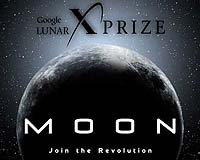 |
Tempe AZ (SPX) Jan 07, 2011 The Moon, Earth's closest neighbor, has long been studied to help us better understand our own planet. Of particular interest is the lunar interior, which could hold clues to its ancient origins. In an attempt to extract information on the very deep interior of the Moon, a team of NASA-led researchers applied new technology to old data. Apollo seismic data was reanalyzed using modern methodologies and detected what many scientists have predicted: the Moon has a core. According to the team's findings, published Jan. 6 in the online edition of Science, the Moon possesses an iron-rich core with a solid inner ball nearly 150 miles in radius, and a 55-mile thick outer fluid shell. "The Moon's deepest interior, especially whether or not it has a core, has been a blind spot for seismologists," says Ed Garnero, a professor at the School of Earth and Space Exploration in ASU's College of Liberal Arts and Sciences. "The seismic data from the old Apollo missions were too noisy to image the Moon with any confidence. Other types of information have inferred the presence of a lunar core, but the details on its size and composition were not well constrained." Sensitive seismographs scattered across Earth make studying our planet's interior possible. After earthquakes these instruments record waves that travel through the interior of the planet, which help to determine the structure and composition of Earth's layers. Just as geoscientists study earthquakes to learn about the structure of Earth, seismic waves of "moonquakes" (seismic events on the Moon) can be analyzed to probe the lunar interior. When Garnero and his graduate student Peiying (Patty) Lin heard about research being done to hunt for the core of the Moon by lead author Renee Weber at NASA's Marshall Space Flight Center, they suggested that array processing might be an effective approach, a method where seismic recordings are added together in a special way and studied in concert. The multiple recordings processed together allow researchers to extract very faint signals. The depth of layers that reflect seismic energy can be identified, ultimately signifying the composition and state of matter at varying depths. "Array processing methods can enhance faint, hard-to-detect seismic signals by adding seismograms together. If seismic wave energy goes down and bounces off of some deep interface at a particular depth, like the Moon's core-mantle boundary, then that signal "echo" should be present in all the recordings, even if below the background noise level. But when we add the signals together, that core reflection amplitude becomes visible, which lets us map the deep Moon," explains Lin, who is also one of the paper's authors. The team found the deepest interior of the moon to have considerable structural similarities with the Earth. Their work suggests that the lunar core contains a small percentage of light elements such as sulfur, similar to light elements in Earth's core - sulfur, oxygen and others. "There are a lot of exciting things happening with the Moon, like Professor Mark Robinson's LRO mission producing hi-res photos of amazing phenomena. However, just as with Earth, there is much we don't know about the lunar interior, and that information is key to deciphering the origin and evolution of the Moon, including the very early Earth," explains Garnero.
Share This Article With Planet Earth
Related Links Arizona State University Mars News and Information at MarsDaily.com Lunar Dreams and more
 Rocket City Space Pioneers Announce Partnership With Solidworks
Rocket City Space Pioneers Announce Partnership With SolidworksHuntsville AL (SPX) Jan 07, 2011 The Rocket City Space Pioneers - a partnership of Huntsville businesses, educational institutions and non-profit organizations - have announced that Dassault Systemes SolidWorks has partnered with them as a sponsor to provide software for their entry in the Google Lunar X PRIZE (GLXP). The GLXP is a $30 million competition that challenges space professionals and engineers from across the g ... read more |
|
| The content herein, unless otherwise known to be public domain, are Copyright 1995-2010 - SpaceDaily. AFP and UPI Wire Stories are copyright Agence France-Presse and United Press International. ESA Portal Reports are copyright European Space Agency. All NASA sourced material is public domain. Additional copyrights may apply in whole or part to other bona fide parties. Advertising does not imply endorsement,agreement or approval of any opinions, statements or information provided by SpaceDaily on any Web page published or hosted by SpaceDaily. Privacy Statement |